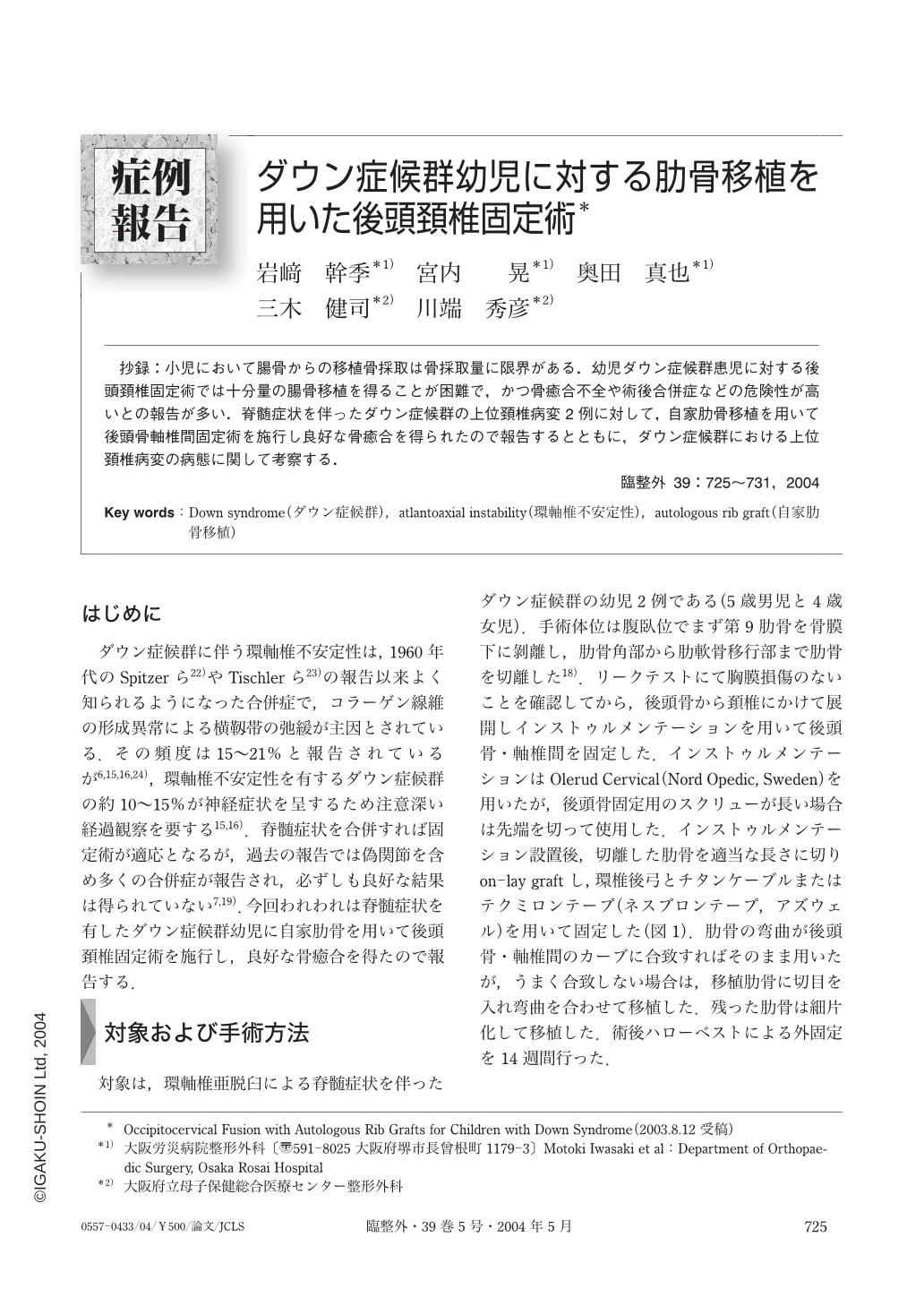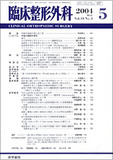Japanese
English
- 有料閲覧
- Abstract 文献概要
- 1ページ目 Look Inside
抄録:小児において腸骨からの移植骨採取は骨採取量に限界がある.幼児ダウン症候群患児に対する後頭頚椎固定術では十分量の腸骨移植を得ることが困難で,かつ骨癒合不全や術後合併症などの危険性が高いとの報告が多い.脊髄症状を伴ったダウン症候群の上位頚椎病変2例に対して,自家肋骨移植を用いて後頭骨軸椎間固定術を施行し良好な骨癒合を得られたので報告するとともに,ダウン症候群における上位頚椎病変の病態に関して考察する.
The authors reported 2 cases of Down syndrome in children in which posterior occipitocervical arthrodesis was performed with an autologous rib graft. The patients were a 5-year-old boy and a 4-year-old girl, both of whom had progressive myelopathy. After more than two years of follow-up, solid fusion and neurological recovery was verified in both patients. Atlantoaxial instability is common in Down syndromes with a reported prevalence of approximately 15~22%. Because of a high rate of complications, such as by bone resorption and pseudoarthrosis, the authors recommend occipitocervical arthrodesis with an autologous rib graft for Down syndrome children with cervical myelopathy secondary to atlantoaxial instability associated with atlantooccipital instability and/or os odontoideum. The autologous rib graft procedure is described as an alternative method to an iliac graft to achieve occipitocervical arthrodesis, especially in infants.

Copyright © 2004, Igaku-Shoin Ltd. All rights reserved.


